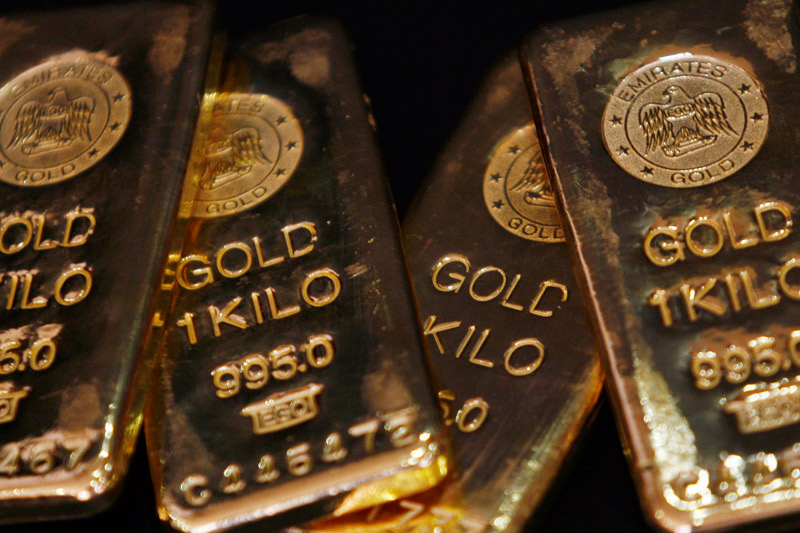Street Calls of the Week
Investing.com -- Goldman Sachs upped its year-end gold price outlook from $3,100 to $3,300 per troy ounce and its forecast range to $3,250-$3,520, citing unexpected rises in exchange-traded fund (ETF) inflows and sustained robust demand from central banks.
Gold recently surged above $3,000 per ounce on March 14 after a period of speculative repositioning, driven by headlines surrounding a possible tariff package targeting the EU and media attention on a “Mar-a-Lago accord” framework.
This resulted in a sharp rebound in speculative length, pushing gold back to the 85th percentile of positioning after net additions of approximately 60 tonnes.
Goldman’s bullish outlook is underpinned by expectations that central banks will maintain strong buying momentum. The bank now expects an average of 70 tonnes per month in central bank purchases, up from its prior estimate of 50 tonnes.
“Our base case forecast assumes speculative positioning normalizes from current elevated levels (85th percentile), while the top end of our price range reflects persistently stretched positioning amid heightened uncertainty,” Goldman strategists Lina Thomas and Daan Struyven said in a report.
The report also highlights the possibility that, under tail-risk scenarios, gold prices could surpass $4,200 per ounce by the end of 2025.
China’s role in the global gold market remains pivotal, with its central bank continuing to accumulate gold as part of a broader diversification strategy.
Goldman Sachs estimates that if China maintains its current pace of gold purchases — roughly 40 tonnes per month — it could take 3-6 years for its gold reserve share to reach 20-30%, aligning it closer to developed market standards.
The Wall Street firm also notes that newly authorized gold allocations for Chinese insurers, amounting to around 280 tonnes, could provide a price floor as demand emerges on price dips.
Potential downside risks include a Russia-Ukraine peace agreement, which could trigger short-term speculative selling. However, strategists believe this is unlikely to materially alter the structural supply-demand imbalance.
“The freezing of Russian central bank assets established a significant precedent that should keep central bank demand high,” the report noted.
Another potential event that could cause a temporary price pullback is a sharp equity sell-off, which could lead to margin-driven liquidation of gold positions.
But such events are likely to be short-lived, strategists said, as high uncertainty would eventually pull speculative buyers back into the market.
Earlier this week, Bank of America also raised its gold price target, to $3,500 per ounce, a level it expects gold to reach within two years.
Moreover, the bank lifted its average price forecasts, projecting gold to trade at $3,063 per ounce in 2025 and $3,350 per ounce in 2026, up from its previous estimates of $2,750 and $2,625 per ounce, respectively.
